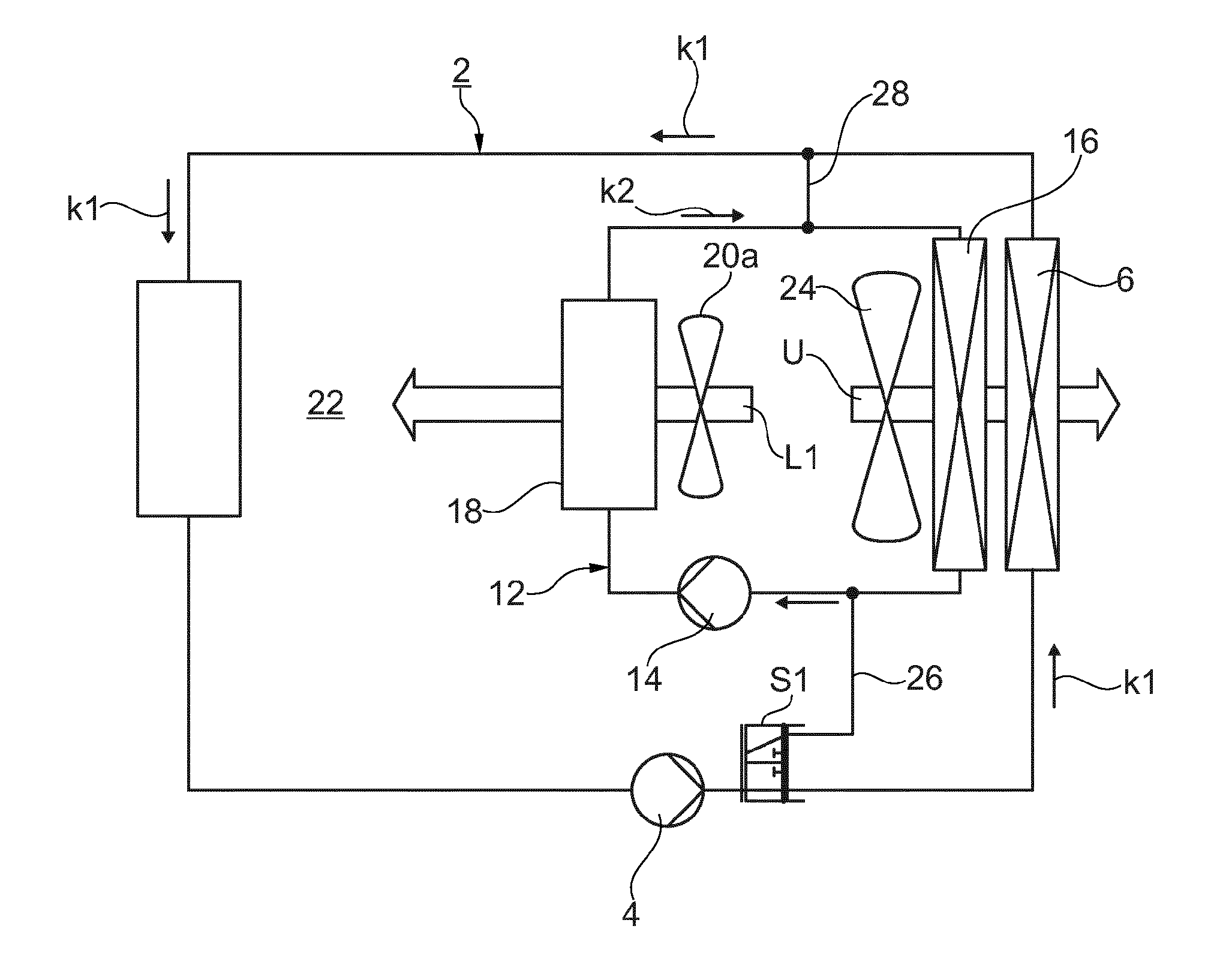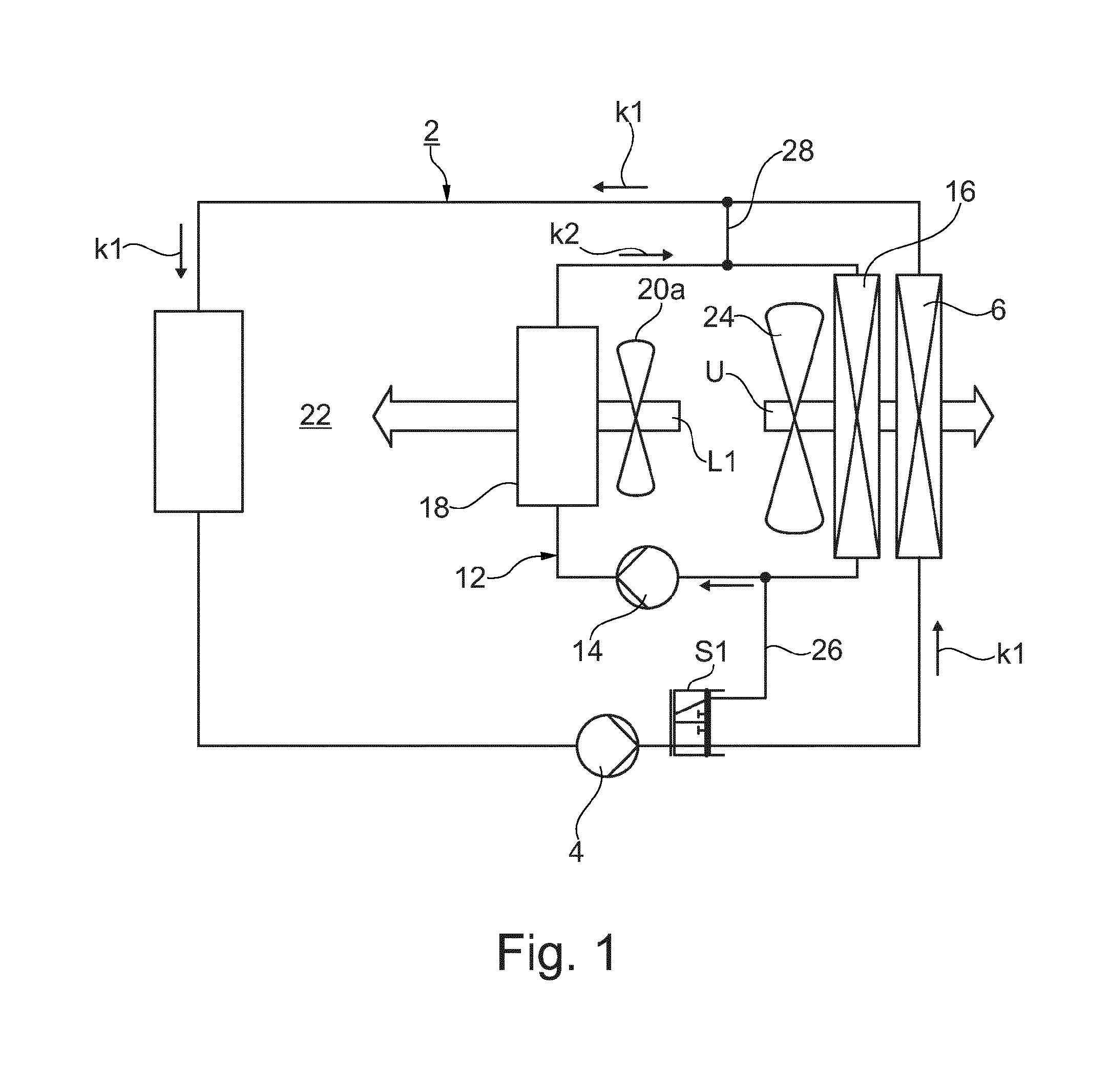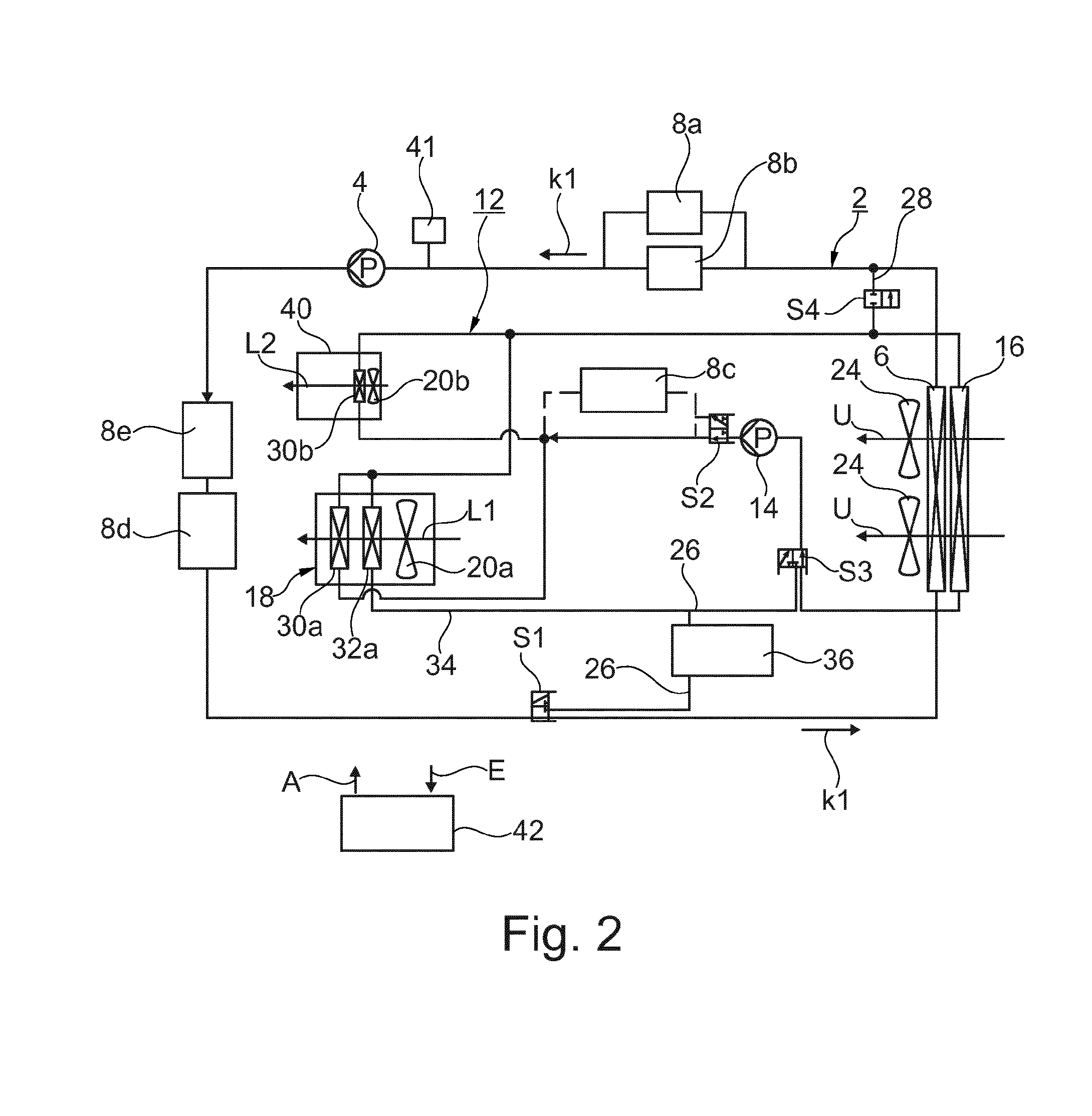Thermal management for an electric or hybrid vehicle and a method for air-conditioning the interior of such a motor vehicle
a technology of electric or hybrid vehicles and management systems, which is applied in the operation mode of machines, lighting and heating apparatus, transportation and packaging, etc., can solve the problems of reducing the possible range of electric operation, little waste heat of combustion or electric drive available for other purposes, etc., and achieves high energy efficiency and improved thermoelectric module efficiency.
- Summary
- Abstract
- Description
- Claims
- Application Information
AI Technical Summary
Benefits of technology
Problems solved by technology
Method used
Image
Examples
Embodiment Construction
[0039]The basic structure of the thermal management system is explained in detail with reference to FIG. 1: The thermal management system comprises a first coolant circuit 2, in which a liquid first coolant K1 is cycled, as indicated by the arrows. The first coolant circuit is hereinafter referred to as HT coolant circuit 2. A first pump 4, a first ambient heat exchanger 6 and at least one component of an electric powertrain 8 to be cooled are integrated in the HT coolant circuit 2. The electric powertrain 8 thereby forms a heat source and the first ambient heat exchanger 6 is a heat sink.
[0040]The thermal management system additionally comprises a second coolant circuit 12, which is hereinafter referred to as NT cooling cycle 12. For better differentiation, the HT coolant circuit 2 is shown in the figures with a thicker line width. A second liquid coolant K2 is cycled in the NT coolant circuit 12. The second coolant circuit 12 for this purpose comprises a second pump 14, a second a...
PUM
 Login to View More
Login to View More Abstract
Description
Claims
Application Information
 Login to View More
Login to View More - R&D
- Intellectual Property
- Life Sciences
- Materials
- Tech Scout
- Unparalleled Data Quality
- Higher Quality Content
- 60% Fewer Hallucinations
Browse by: Latest US Patents, China's latest patents, Technical Efficacy Thesaurus, Application Domain, Technology Topic, Popular Technical Reports.
© 2025 PatSnap. All rights reserved.Legal|Privacy policy|Modern Slavery Act Transparency Statement|Sitemap|About US| Contact US: help@patsnap.com



